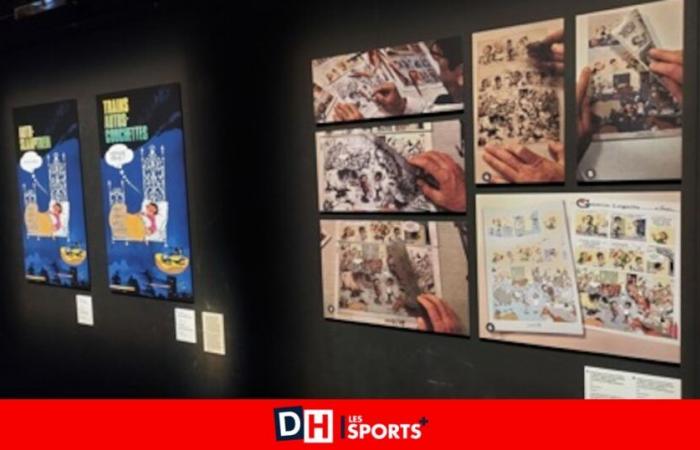
The ticket office hall sets the tone by comparing the work of two architects renowned for their magnificent stations. Louis Dela Censerie, whose Antwerp station was opened in 1905, coexists with Santiago Calatrava, to whom we owe the Liège-Guillemins station, inaugurated more than a century later (2009).
This testimony to two eras marks a route that revisits several major railway buildings such as the Central Station in Brussels, and rolling stock such as fully restored cars from the 1930s.
Symbol of this bridge between past and future: the project by François Schuiten and the French sculptor Pierre Matter, Moby Dick. This monumental sculpture, which is to stand in the middle of the Van Praet crossroads from 2026, is a “reference linking the railway to the port of Brussels”, in the words of the Belgian artist. Designed from a locomotive at the end of its life, this “animal-machine expresses the dimension of the future”.
Before that, the visitor will have been able to appreciate some originals by André Franquin, whose Gaston adorns a poster praising the night trains of the time. Some of the Spirou and Fantasio albums produced in the aftermath of the Second World War reflect the dimensions of progress and speed specific to that time. Originals by François Schuiten are also exhibited around his album La Douce, whose heroine is none other than a Type 12 locomotive, a true industrial feat capable of reaching a speed of 165 km/h when it was put into service in 1939.
A little further on, the work of Victor Horta is mentioned, who had been working on an architectural project for the Halte Centrale in Brussels since 1912. “He was interested at the end of his life in the mark he would leave on the urban landscape”, says Françoise Aubry, former curator of the Horta Museum. He had planned a vast real estate project for the entire district, but had to give up. His first two drafts were rejected, the third, made official in 1938, was the right one. While the bulk of the work was done when the artist died in 1947, it was Maxime Brunfaut who completed it all and who won the laurels at the inauguration of the Central Station in 1952.
As artistic advisor to the Belgian railways from 1932 to 1938, Henry van de Velde contributed to enriching the achievements intended for the railway, both for the built heritage and for the rolling stock. Two carriages from the 1930s, whose interiors were designed by the artist, have thus been renovated. While this result is already visible at the museum until next May, the heritage managers at the SNCB do not intend to stop there. “There are eight carriages of this type and the aim in the future is to have them run around Train World”, says Stéphane Disière, in charge of temporary exhibitions.
Henry van de Velde is also the man behind the timeless SNCB logo. At least in part, since the emblem was chosen in 1935 at the end of a competition whose jury president was Mr. van de Velde. The latter simply replaced the original circles with an oval. Many have tried to rethink this soon-to-be-centenary logo, in vain: the power of the B is still intact… until now.
As for the title of the exhibition, it is addressed directly to the public. Tables are in fact scattered in various places of the museum, inviting the visitor to take the pencil to put himself in the shoes of one of the 13 artists or to give free rein to his imagination if he hopes to be the fourteenth.




